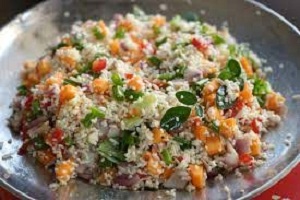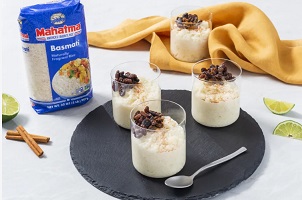Parboiled White Rice: How to Cook Non-soggy Nigerian Rice
Parboiled White Rice: How to Cook Non-soggy Nigerian Rice

Parboiled White Rice: Best Way to Cook Non-soggy Nigerian Rice
Rice is a grain that belongs to the cereal family. It is grown in areas with a lot of rain because it takes a lot of water to grow.
Rice seeds are normally 5 to 10 millimeters long and 3 millimeters thick. In Nigeria, it is a popular staple meal.
Rice comes in numerous types, but the parboiled long-grain white rice is the most popular in Nigeria.
Rice is popular because it goes well with so many different sauces and stews. It’s also used to make recipes for parties.
Related >>>>
Table of Contents
Rice Recipes – Parboiled White Rice
Rice is available in a wide range of shapes and sizes. Nigerians, on the other hand, prefer the solid long-grain white rice.
This rice type has a high carbohydrate content, with up to 80 grams per 100 grams of cooked rice. It is common practice to parboil the long grain rice twice to lower the high carbohydrate content. ‘Again,’ because the long grain rice we consume is clearly already parboiled.
What Is the Difference Between Parboiled White Rice and Boiled White Rice?
To add to the confusion, commercially, parboiled rice is referred to as boiled rice. However, the process that it goes through is formally known as parboiling or partially boiling, therefore we’ll refer to it as parboiled rice in this post.
Parboiled White Rice – Are there Health Benefits?
Prior to the main cooking, parboiling rice entails pre-cooking the rice in water and then rinsing it in cold water.
This method of pre-cooking ensures that your Jollof Rice does not burn before it is finished, avoiding the cardboard flavor associated with uncooked Jollof Rice.
Some people argue that parboiling rice removes all of the nutrients, but I’d rather get those trace amounts of nutrients elsewhere than wind up with charred, mushy, and undercooked rice.
What Does It Mean to Parboil Rice?
The term “white rice” refers to rice that has been cooked without any added ingredients. The only thing left to do is add salt. White rice is a common side dish served with a sauce or stew.
Rice is something we Nigerians are known for.
Whether it’s Jollof rice, Fried Rice, Concoction Rice, Rice, and Beans, or simply White Rice with stew or sauce, there’s something for everyone.
Why Do You Parboil White Rice?
Nigerians love rice, and I’m sure you’ll agree that fried rice and party jollof rice look better if the rice grains are separated, “non-sticky,” “non-soggy,” or “one-one” (as we say it locally).
How To Cook White Rice Nigeria? Parboiled White Rice
Here’s a no-fail strategy I use if you’ve never gotten it right.
Ingredients
- 500-gram long-grain White Rice
- 800 ml water
- 600 ml water
- 1 teaspoon salt (optional)
Method: Parboiling the Rice – Step by Step
1. Firstly, place the clean white rice in a pot and bring it to a boil. Then, pour in 800ml of water and bring to a boil. The rice should be completely submerged in water (twice the level of the rice is ok).
2. Once the water in the rice starts to boil and you see white (starchy contents) coming from the rice, turn off the heat.
3. Then, pour in some cold water, stir well, and strain the rice into a large sieve or a strainer.
4. After that, return the rice to the pot and repeat the process – run more
cold water and transfer to a sieve
5. This procedure aids in the removal of the rice with too much starch
6. If you got the rice from a local market, you can also scrub it with your hands before putting it in the sieve to filter out the leftover water.
7. At this point, you’ll have “parboiled rice,” which you may use to make jollof rice, fried rice, or Coconut rice.
8. Pour 600 mL of water into a pot and bring to a boil until it begins to bubble.
9. Finally, pour in the parboiled rice and the salt, stir well, and cook over medium heat until the rice is done.
The Bottom Line on Parboiled White Rice
The key is to keep the water in the pot extremely hot and at the same level as the rice.
Without turning soggy, the rice should be soft.
If the rice is still hard after the water has evaporated, add a bit more water and continue to cook on low until the rice is tender.


